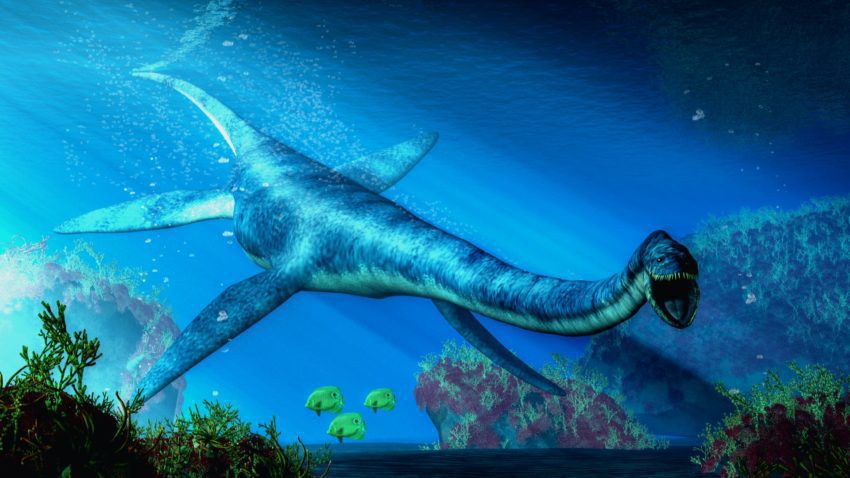
Cryptozoology 101: A Beginner’s Guide
Cryptozoology focuses on finding monsters of lore, myth and reality. For one thing, you don’t have to look for Bigfoot or Nessie. You can focus your research on new species, mutated species or discover something no one has seen before. Get the scoop after the jump.
Defining Cryptozoology
Per the Merriam-Webster dictionary:
The study of and search for animals and especially legendary animals (such as Sasquatch) usually in order to evaluate the possibility of their existence
Merriam-Webster Dictionary of American English, retrieved from: https://www.merriam-webster.com/dictionary/cryptozoology on June 20, 2021
That’s a pretty broad definition. The focus falls on legendary monsters, but it applies to extinct species and mutations within species.
Popular Cryptids
Cryptid is the common term for one of the legendary animals. Not every place will have a cryptid as popular as those listed below. BUT every place has its own legends or unexplained monster sightings. Start with those close to home. It takes a lot to pack up the van, drive out into the mountains, setup camp for a week, and head out to find a cryptid.
A list of local cryptids can be found online. Remember, it’s online. Read with skepticism. Anyway, these are the most popular monsters in cryptozoological field.
- Bigfoot (or Sasquatch)
- Loch Ness Monster (or Nessie)
- Jersey Devil
- Mothman
- Chupacabra
2 Approaches For Cryptid Researchers
As a researcher, you don’t have to focus on the Big 5 cryptids. You can look for new species or mutations to existing animals. Cryptozoology is a broad field with many options available to you. Personally, I focus on real-life monsters. That makes me more of a standard pseudo-zoologist with a twist.
Monsters of Lore
These are the more in line with myth and legend. Your research focuses on one-or-two of the Big 5 cryptids and other monsters without much collected evidence. Along the way, you find find some new critters. Don’t discount tales that sound too good to be true. Take in as much info as you can.
Urban legends, tall tales and myths have a basis in reality. Figure that out and you may find a cryptid.
Real-life Monsters
This approach focuses on finding new species or mutations in current animal populations. For example, Japanese scientists found the Pacific Giant Squid (Kraken for cryptozoologists). Zoologists in Africa discovered the King Cheetah is really a mutant.
You can also investigate if extinct animals, like the Tasmanian Tiger, have returned. This is more my approach. I’d love to make a discovery like the Coelacanth.
How To Research
Getting Started In Cryptozoology
It’s really simple to get started. All you have to do is search for ‘monsters near me’ or check out a book. Most cryptozoologists begin by looking up what kind of monsters are in their local area. There are scores of books available online or in a library. Most of them start with how to get started. I know, it’s lazy for me to say, “Just Google it!”, but it’s really that easy to get started.
Arm-Chair Research
We call this passive form arm-chair research. Once you go in the field, you are now engaged in active research. There’s nothing wrong with doing arm-chair research as your primary investigation type. Not everyone can head to Scotland to find Nessie.
Compiling information and publishing that helps a lot of other cryptozoologists. The more factual information, the better the field work will be. It’s important to cite your sources. Researchers will check the veracity before they accept the information. That helps build everyone’s credibility.
Field Research
Fieldwork is the most exciting type of research. You’ll hike through mountains, dive into oceans or weave through swamps to find an elusive creature. Along the way, you’ll probably find some other interesting animals. Remember to have your camera ready. You never know when a monster will step into view.
Practice with your camera, audio recorders and evidence kits as much as possible. Take every picture and see if you can identify the animal. It could be as simple as pulling out an encyclopedia or a reverse-image search. This is a critical step. If you find an unknown creature, the next step is a review with a scientist at the local university.
Skills And Attributes Required For Cryptozoologists
All cryptozoologists share basic skills. It helps to have some physical attributes, too. Fieldwork requires a lot more than a camera. These skills and attributes include:
- Open mind
- Healthy dose of skepticism
- Digital media editing skills (to clip or enhance visual and audio evidence)
- Cool under pressure
- Training in the sciences (biology, zoology, geography and anthropology are the most helpful)
- Forensic training (for evidence collection and analysis)
- Persistence
- Photography
- Curiosity
Monster Hunting Equipment
You won’t literally hunt cryptids: You’ll get evidence they exist. That means leave the elephant gun at home and pick up a camera. Imitating National Geographic is the way to go. In general, you’ll need this gear:
- Instant camera
- DSLR with a variety of lenses
- Infrared or nightvision camcorder
- Thermal imaging
- Evidence collection kit (like forensic scientists on a crime scene)
- Digital audio recorders
- 3D imaging kit (like LIDAR on an iPad Pro) for prints
- Plaster molding kit
- Sonar imaging (for sea and lake monsters)
- Diving and/or snorkel gear (for sea and lake monsters)
- Underwater-capable action cam (for sea and lake monsters)
Website Resources
- International Cryptozoology Museum
- LiveScience.com
- Atlas Obscura
- Mysterious Universe
- US Department of the Interior: Bureau of Land Management
Discover more from Ghosts & Monsters
Subscribe to get the latest posts sent to your email.